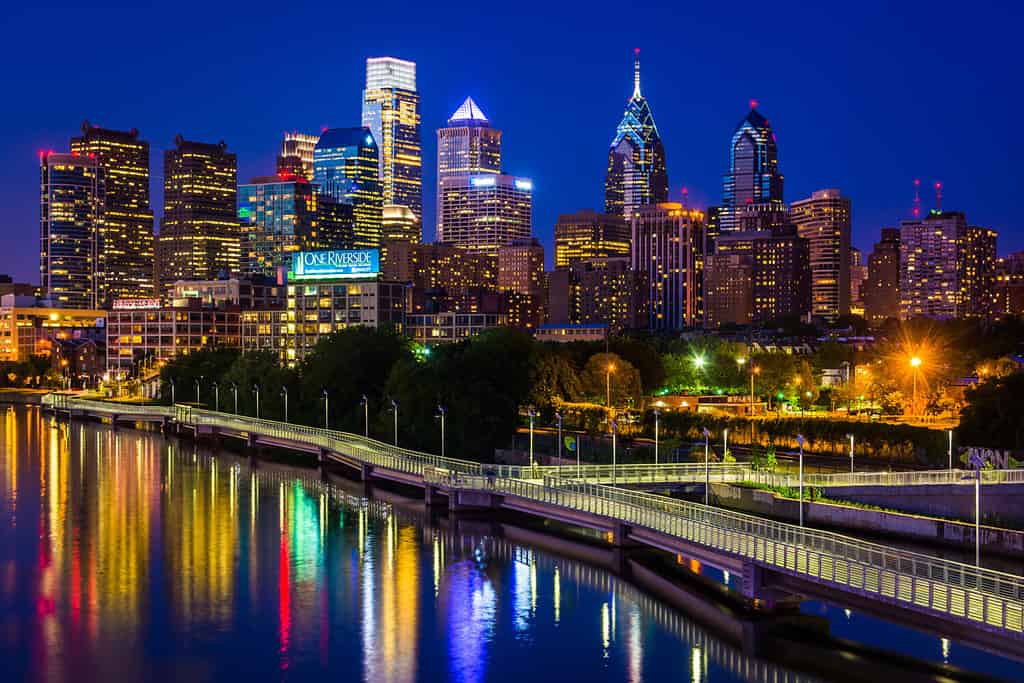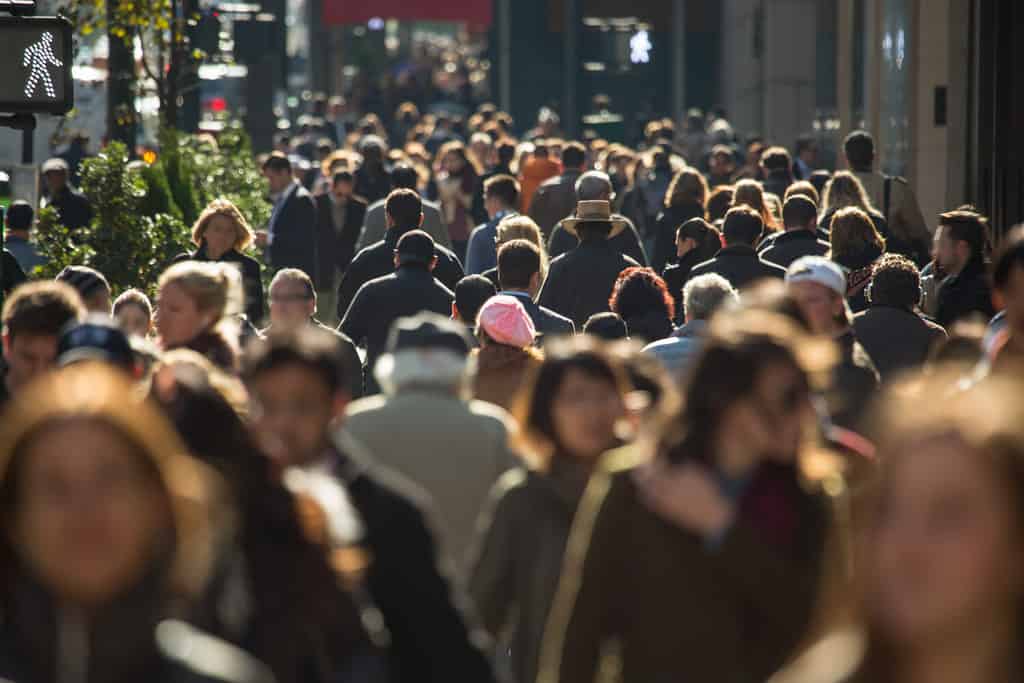Pennsylvania, like other Mid-Atlantic states, has a few large cities within its borders. Places like Philadelphia and Pittsburgh have large populations. However, cities in Pennsylvania, like many other states, have experienced dropping populations in recent years. So, what is the largest city in Pennsylvania now and in 30 years? We will answer both facets of that question using available data and projections for the future.
What Is the Largest City in Pennsylvania Right Now?

Philadelphia is the most populous city in Pennsylvania.
©f11photo/Shutterstock.com
The largest city in Pennsylvania right now is Philadelphia. According to the U.S. Census Bureau, Philadelphia is home to 1,567,258 people as of July 2022. That makes Philadelphia the 6th-largest city in the United States by population.
Philadelphia, called the City of Brotherly Love, is in the southeastern part of the Keystone State. The city is along the Delaware River, a river that has served as a source of water and transportation. The Schuylkill River flows through the southwestern part of the city and joins the Delaware River.
Philadelphia is a historic city. The city hosted the Continental Congress as they adopted the Declaration of Independence. Also, the city was once a temporary capital of the United States. Since then, Philly has been a city on the rise. Businesses and people alike flourish in this area, and it has its own distinct culture.
What Will Be the Largest City in Pennsylvania in 30 Years?

Philly will continue to have the highest population in the state.
©ESB Professional/Shutterstock.com
| City | Populaiton |
|---|---|
| Philadelphia | 1,567,258 |
| Pittsburgh | 302,958 |
| Allentown | 125,094 |
The largest city in Pennsylvania in 30 years will be Philadelphia. Barring some catastrophe, the population in Philadelphia will simply be too high for other cities in this state to surpass. The next two largest cities in Pennsylvania are Pittsburgh and Allentown. They have populations of 302,958 and 125,094, respectively.
Simply put, neither of those cities can grow large enough to overtake Philadelphia at the top spot. The city has a lead of over 1,000,000 people. Pittsburgh and Allentown lack the economy and housing to make such extreme growth possible.
Of course, just because Philadelphia will be the largest city in Pennsylvania in 30 years does not necessarily mean its population must skyrocket from now until then. In fact, the population in Philadelphia has decreased a fair amount over the past two years.
The 2020 Census found that Philadelphia had a population of 1,603,799. As of 2022, the population dropped 2.3% to 1,567,258. That is a significant population loss, and it could continue to trickle downward for some time.
Of course, the population losses could reverse course in coming years. The COVID-19 Pandemic was a major cause of people abandoning cities. Since that is no longer a public emergency, people could move back to the area. Still, the housing market and economic turmoil in the region may prompt fewer people to move to cities. Either way, Philadelphia is still going to be the largest city in Pennsylvania in 2050.
Predicting the Population of Philadelphia in 2050

Philadelphia is set to increase its population by a small amount.
©blvdone/Shutterstock.com
Now that we have uncovered the reasons that Philadelphia will be the most populous city in 2050, let’s take a look at population estimates for this time. According to a Delaware Valley Regional Planning Commission, the population in the city could rise by about 8% by 2050. If that’s the case, then roughly 1,700,000 people will live in this area in another 30 years.
However, that estimate was made before the COVID-19 Pandemic and the ensuing economic turmoil in the area. So, that may not hold up in the future. The population in Philadelphia decreased by 36,451 people in just two years. So, it may take longer for the city to make up the difference.
Ontario Tech University also projected that Philadelphia’s population would rise in the future. According to them, the Philadelphia Metropolitan Area would grow from a population of 6,245,051 to 7,364,102 in the next 30 years. However, the metro area is far larger than the city itself.
In either case, it seems as though the city’s population is projected to rise by a small amount over the next 30 years.
What Makes Philadelphia a Desirable Place to Live?

Philadelphia is a city with much to offer people who appreciate history.
©Songquan Deng/Shutterstock.com
Philadelphia and the city’s suburbs are an attractive place to live for many people. Philadelphia is a historic city that is home to a wide assortment of educational and economic benefits for people in the region. The city has job opportunities in many industries including medicine, construction, manufacturing, and finance. So, people from various backgrounds can find jobs in this region.
The city is a hub of entertainment and culture, too. The area has zoos, art museums, sports venues, and breweries at which people can spend their free time.
Best of all, Philadelphia is centrally located in the Northeast Corridor. Baltimore and Washington D.C. are just a few hours’ travel south of the City of Brotherly Love. New York City is a 2-hour drive or a short 1-hour flight. People can reach other cities for work or leisure quickly and easily.
Also, Philly is close to the Poconos Mountains and the beaches in New Jersey, Delaware, and Maryland. Philadelphia is well-developed but not too far from beautiful natural regions. All these factors influence peoples’ decision to move to the region.
So, Philadelphia is the largest city in Pennsylvania now and in 30 years. However, the population projections for this area are all over the place. The next few years will be crucial as people decide whether to move to this area or to continue avoiding it.
The photo featured at the top of this post is © Mihai_Andritoiu/Shutterstock.com
Thank you for reading! Have some feedback for us? Contact the AZ Animals editorial team.







